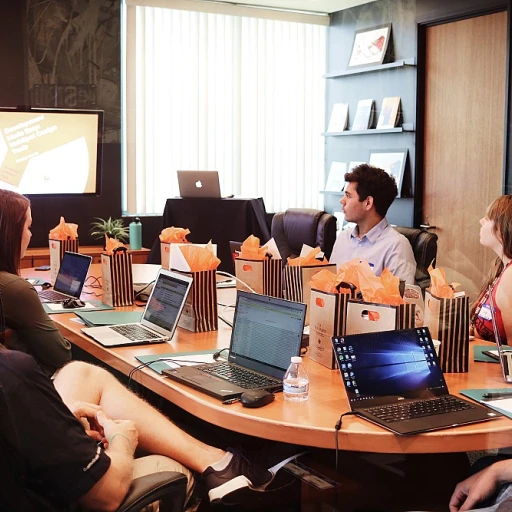
Understanding the Social Intranet
Exploring the Concept of a Social Intranet
In the evolving landscape of remote work, the social intranet has emerged as a pivotal tool for companies aiming to enhance internal communications and employee engagement. Unlike the traditional intranet, which primarily served as a repository for company documents and information, the social intranet integrates social features akin to those found on social media platforms. This transformation allows for a more dynamic and interactive digital workplace.
The core idea behind a social intranet is to create a centralized platform where employees can access not only work-related content but also engage in real-time communication and collaboration. This fosters a sense of community and belonging, which is crucial for maintaining employee experience in a remote setting. The integration of social networking elements encourages knowledge sharing and helps bridge the gap between geographically dispersed teams.
Key features of a social intranet include user-friendly interfaces, customizable tools for content management, and the ability to facilitate internal discussions and feedback loops. These features not only enhance communication but also support collaboration and employee engagement, which are further explored in subsequent sections.
For companies looking to implement a social intranet, understanding its potential to transform work dynamics is essential. By leveraging the benefits of social intranets, organizations can create a more cohesive and engaged workforce, ultimately leading to improved productivity and a stronger company culture.
To delve deeper into how social intranets can be utilized for engaging remote teams, you might find these engaging activities insightful.
Boosting Communication in Remote Teams
Strengthening Team Connections
In the realm of remote work, effective communication is the backbone of success. A social intranet serves as a dynamic platform that enhances internal communications, bridging the gap between remote employees. Unlike traditional intranets, social intranets incorporate social features that facilitate real-time interactions, making it easier for team members to stay connected.
Facilitating Seamless Information Flow
One of the key features of a social intranet is its ability to streamline communication and collaboration. By providing a centralized hub for content sharing, employees can access important information and updates without the hassle of sifting through endless emails. This ease of access not only boosts productivity but also enhances the overall employee experience.
Empowering Employees with Tools
Social intranets are equipped with a variety of tools that support communication and collaboration. Features such as instant messaging, discussion forums, and social networking capabilities allow users to engage in meaningful interactions. These tools empower employees to share knowledge and ideas, fostering a culture of open communication and collaboration.
Enhancing Engagement through Interactive Features
Engagement is a crucial aspect of remote work, and social intranets play a pivotal role in fostering employee engagement. By integrating interactive features such as polls, surveys, and feedback mechanisms, companies can ensure that employees feel heard and valued. This not only improves morale but also strengthens the company culture.
For more engaging activities that can enhance communication and team bonding, consider exploring engaging activities for a virtual baby shower.
Enhancing Collaboration and Productivity
Maximizing Team Synergy Through Social Intranets
In the realm of remote work, enhancing collaboration and productivity is crucial for success. Social intranets serve as a powerful platform to bridge the gap between dispersed team members, offering a suite of features that promote seamless communication and teamwork.
One of the standout benefits of a social intranet is its ability to facilitate real-time collaboration. Unlike traditional intranets, which often focus solely on information dissemination, social intranets integrate social media-like features that encourage interaction and engagement among employees. This fosters a digital workplace where knowledge sharing becomes second nature, and employees can easily access the tools they need to collaborate effectively.
Key Features That Drive Productivity
- Social Features: These include forums, chat functions, and social networking capabilities that allow users to connect and communicate effortlessly.
- Content Management: A robust intranet platform provides comprehensive content management tools, enabling employees to create, share, and manage documents efficiently.
- Internal Communications: Streamlined internal communications ensure that all employees are on the same page, reducing misunderstandings and enhancing overall productivity.
- Access to Resources: Employees can quickly access company resources, policies, and other critical information, which supports informed decision-making and efficient work processes.
By leveraging these features, companies can create an environment where collaboration and productivity thrive, even when team members are miles apart. The right social intranet not only enhances the employee experience but also drives engagement and innovation across the organization.
Fostering Employee Engagement and Culture
Building a Strong Company Culture
In a remote work environment, fostering a strong company culture can be challenging. However, a well-designed social intranet can bridge the gap by providing a digital workplace where employees feel connected and engaged. Social intranets offer features that promote interaction and communication, allowing employees to share experiences and celebrate achievements, which are crucial for maintaining a sense of belonging.
Enhancing Employee Engagement
Employee engagement is vital for productivity and job satisfaction. Social intranets facilitate this by offering tools that encourage participation and collaboration. Features such as social networking, real-time communication, and knowledge sharing enable employees to contribute ideas and feedback, enhancing their overall experience. By integrating these social features, companies can create an environment where employees feel valued and motivated.
Encouraging Communication and Collaboration
Effective communication is the backbone of successful remote teams. Social intranets provide a platform for seamless internal communications, allowing employees to access information and collaborate efficiently. With tools designed for communication collaboration, employees can easily connect with colleagues, share content, and work together on projects, regardless of their physical location.
Utilizing Social Features for Employee Experience
Social intranets are more than just traditional intranet platforms; they are dynamic environments that enhance the employee experience. By incorporating social media-like features, these platforms enable employees to engage in informal interactions, fostering a sense of community. This not only improves morale but also encourages employees to participate actively in the company's culture and initiatives.
Overcoming Challenges with Social Intranets
Addressing Common Obstacles in Social Intranet Implementation
While the benefits of a social intranet are numerous, implementing such a platform is not without its challenges. Companies often face hurdles that can impact the effectiveness of their intranet, particularly in remote work settings. Understanding these challenges is crucial for successful adoption and maximizing employee engagement.
Ensuring Seamless Communication and Collaboration
One of the primary challenges is ensuring seamless communication and collaboration among employees. Social intranets are designed to enhance internal communications, but they require proper management to prevent information overload. Organizations need to establish clear guidelines on how to use the platform effectively, ensuring that communication remains efficient and relevant.
Overcoming Technical Barriers
Technical barriers can also pose significant challenges. Employees may encounter difficulties accessing the intranet platform due to connectivity issues or lack of familiarity with the software. Providing comprehensive training and support can help users navigate these obstacles, ensuring they can fully leverage the platform's features.
Maintaining Employee Engagement
Maintaining employee engagement is another critical aspect. While social features of intranets can boost engagement, they must be carefully curated to align with the company culture. Encouraging active participation and content sharing can help foster a sense of community, but it requires ongoing effort from management to keep the platform dynamic and engaging.
Balancing Privacy and Transparency
Balancing privacy and transparency is essential in a social intranet. Employees need to feel secure that their personal information is protected while also having access to necessary company information. Implementing robust security measures and clear privacy policies can help build trust among users.
Integrating with Existing Tools
Finally, integrating the social intranet with existing tools and systems can be challenging. Ensuring compatibility with other digital workplace tools is vital for a smooth transition. Companies should evaluate the key features of potential intranet software to ensure it complements their current infrastructure and meets their specific needs.
By addressing these challenges head-on, companies can create a more cohesive and productive remote work environment, leveraging the full potential of their social intranet.
Choosing the Right Social Intranet for Your Team
Identifying Key Features for Your Team
Choosing the right social intranet for your team is crucial to enhancing your remote work environment. It's essential to identify the key features that align with your company's needs and goals. Consider the following aspects when evaluating different intranet platforms:
- Communication and Collaboration: Look for platforms that offer robust communication tools, enabling real-time interaction and seamless collaboration among employees. Features like chat, video conferencing, and discussion forums can significantly enhance internal communications.
- Employee Engagement: A good social intranet should foster employee engagement through social features such as activity feeds, social networking, and recognition tools. These elements help build a sense of community and belonging among remote workers.
- Content Management: Efficient content management is vital for knowledge sharing and easy access to information. Ensure the intranet software provides user-friendly content creation and management tools, allowing employees to share and access resources effortlessly.
- Integration Capabilities: The ability to integrate with other tools and platforms used by your company can enhance the digital workplace experience. Check for compatibility with existing software to streamline workflows and improve productivity.
- Customization and Scalability: As your company grows, your intranet should be able to scale and adapt to changing needs. Look for platforms that offer customization options to tailor the user experience and accommodate future growth.
Evaluating User Experience and Support
Beyond features, the user experience and support provided by the intranet platform are critical factors to consider. A platform with an intuitive interface and easy navigation will encourage adoption and usage among employees. Additionally, reliable customer support and training resources can ensure a smooth transition and ongoing success.
By carefully assessing these elements, you can select a social intranet that not only meets your current needs but also supports your company's long-term objectives, enhancing the overall employee experience in a remote work setting.












